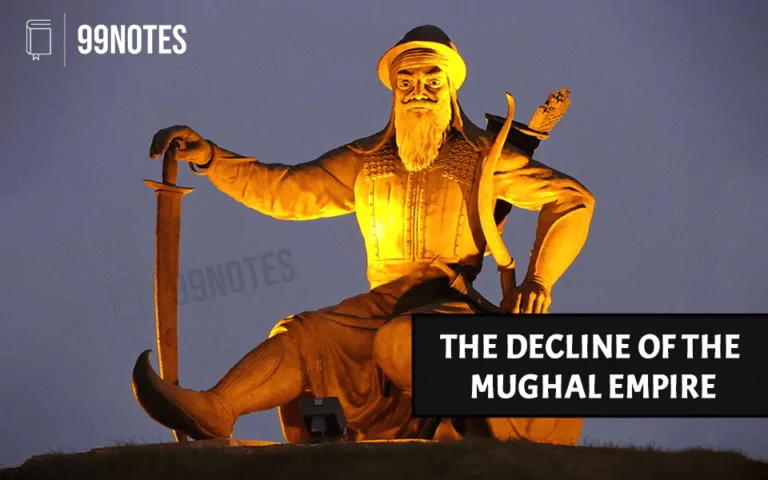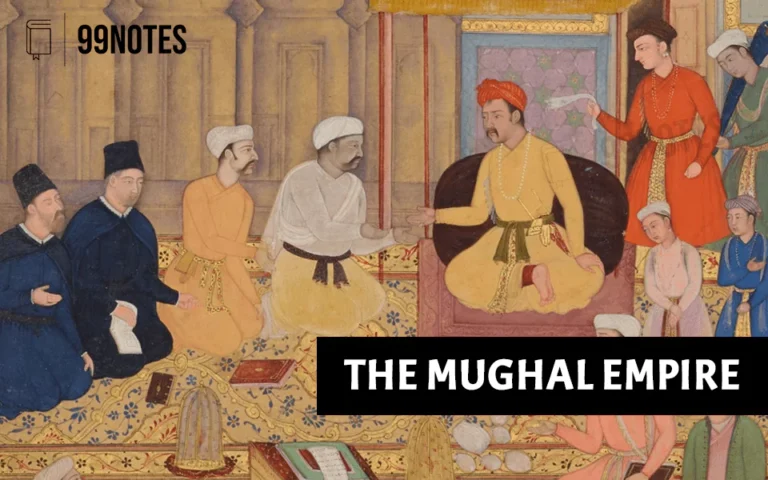Bhakti Movement in North India- Notes for UPSC
Bhakti Movement in North India
The period from 1375 to 1700 is known as the era of Bhakti movement in North India. During this time, many bhakti saints of different beliefs emerged from various parts of India. Some, like Kabir and Baba Guru Nanak, rejected all orthodox religions. Others, such as Tulsidas and Surdas, accepted the existing beliefs but wanted to make them accessible to all.
We have learnt about the Bhakti saints of South India in the previous article. This article shall focus only on Bhakti movement in North India.
Popular Bhakti Saints of North India
Since the 14th century, we find literature created by dozens of Saint poets in North India. Varanasi particularly became a centre of new cultural awakening. Poets of vernacular languages like Ramananda, Kabir, Tulasidas and Ravidas resided in Varanasi, and so did the Vaishnav saints like Vallabhacharya.
During Bhakti movements in North India various poets from other areas include Dadu Dayal of Ahmedabad, Mirabai of Chittor(Rajasthan), Shankaradeva of Assam and Surdas of Faridabad(Harayana) have shown their art, like mirabai’s bhajan
1. Kabir (14th-15th Century)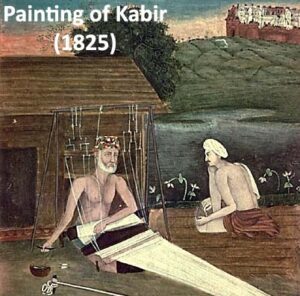
Source: https://upload.wikimedia.org/wikipedia/commons/c/c8/Kabir004.jpg
- Kabir was a 15th-century saint born in a Muslim julahas (weavers) family near Benares. He is one the famous saint during the time of bhakti movements in north India.
- All information about him is from his verses called Sakhis and pad.
Kabir Teachings
-
- Complete rejection of major religious traditions.
- He ridiculed all forms of external worship of Brahmanical Hinduism and Islam, the pre-eminence of priestly classes and the Caste system.
- Bhakti was the only route to salvation.
- He believed in a formless supreme God.
Languages used by Kabir
-
- A form of spoken Hindi (Awadhi).
- A Language of nirguna poets, the sant bhasha.
- Ulatbansi (upside-down sayings) Used cryptic language, sometimes challenging to follow.
- Followers include Hindus, Sikhs and Muslims.
- Hagiographies (biographies of a saint) have been created through verses ascribed to Kabir. These have been compiled in three distinct but overlapping traditions, which are –
-
- The Kabirpanth (the sect of Kabir) in Varanasi and elsewhere has preserved the Kabir’s Bijak.
- Kabir Granthavali is found in Dadupanth’s Panch Vani (Dadu Dayal) in Rajasthan.
- Adi Granth Sahib – This sacred Sikh literature contains many of his compositions.
- His terms for the Ultimate reality were derived from various religions, such as –
-
- Islamic expression – Allah, Khuda, Hazrat and Pir.
- Vedantic traditions – alakh (the unseen), nirakar (formless), Brahman, Atman, etc.
- Mystical connotations – shabda (sound) or shunya (emptiness) drawn from yogic traditions.
- According to Hindu traditions, he was initiated into the Bhakti tradition through Guru Ramananda.
2. Tulsidas (1511-1623)
Source: https://upload.wikimedia.org/wikipedia/commons/a/a4/Tulsidas_composing_his_famous_Avadhi_Ramcharitmanas.jpg
- Tulasidas conceived God in the form of Ram. He composed Ramcharitmanas in Awadhi.
- He also founded the Sankatmochan Temple devoted to Lord Hanuman in Varanasi.
- Started the Ramleela plays, a folk-theatre adaption of the Ramayana.
- Other works of Tulsidas include Dohavali, Sahitya-Ratna or Ratna Ramayan, Gitavali, Krishna Gitavali or Krishnavali and Vinaya Patrika.
- He was a contemporary of Akbar.
3. Surdas (1480s to 1580s)
- He was an ardent devotee of Krishna.
- He accepted already existing beliefs and rituals but wanted to make these accessible to all.
- His famous compositions include Sursagara, Surasaravati and Sahitya Lahri.
4. Shankaradeva of Assam (1449-1568)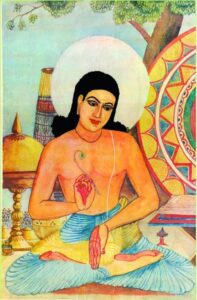
Source: https://en.wikipedia.org/wiki/Sankardev#/media/File:Sankaradeva.jpg
- Shankaradeva was a devotee of lord Vishnu. He started a neo-Vaishnavite movement called Ekasarana Dharma.
- He composed poems and plays in Assamese. He also created a new literary language called
- Literary works of Shankardeva include –
-
- Kirtana-Ghosh contains verses glorifying Krishna in the Brajavali
- Bhagavat of Sankardev is an Assamese adaptation of Bhagavata Purana.
- He began the practice of setting Namghars (house of recitation) and established new forms of art:
- New forms of music – Borgeet
- Theatrical performance – Ankia Naat and Bhaona
- A Dance style – Sattriya.
5. Mirabai (15th – 16th cent)
- Sources: Biographies have been reconstructed primarily from the bhajans attributed to her, which were transmitted orally for centuries. She bring the bhakti movement in north India on another level.
Earlyl Life of Mirabai
Mirabai was a Rajput princess from Merta in Marwar. She was married to a Sisodia clan’s prince of Mewar, Rajasthan, against her will. She disobeyed her husband and did not submit to the conventional role of mother and wife.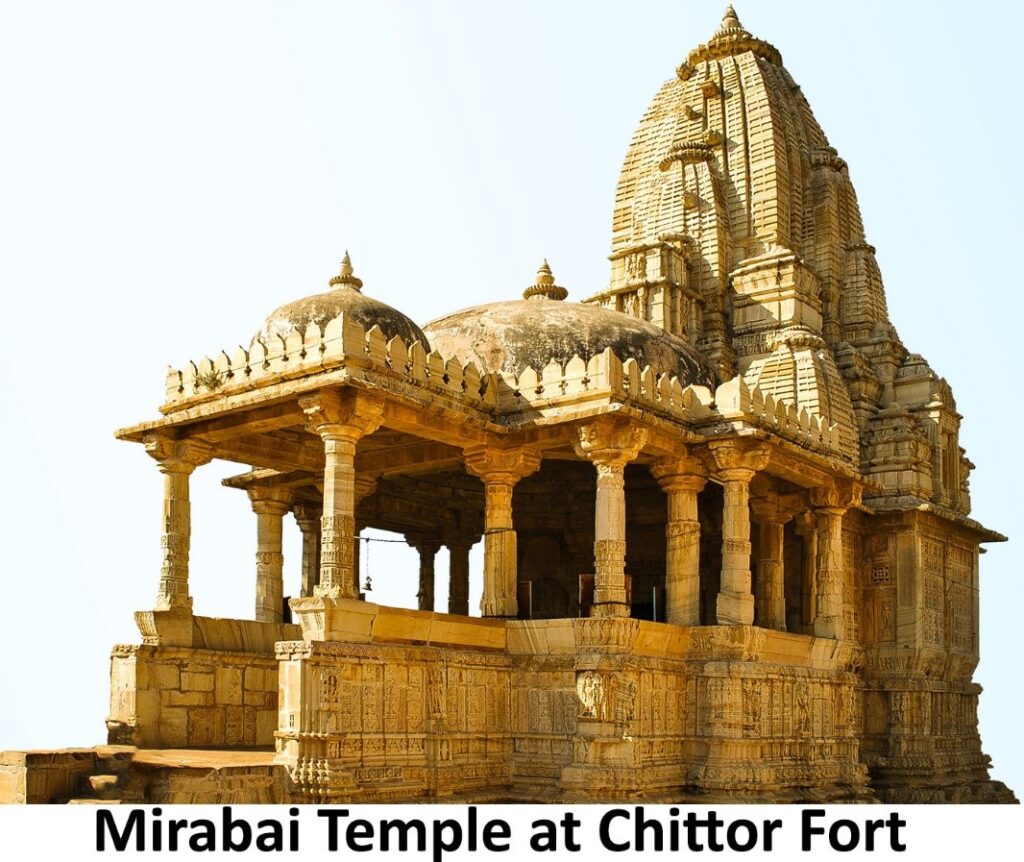
- She recognised Krishna, the avatar of Vishnu, as her lover. Her in-laws attempted to poison her, but she managed to flee the palace and lived a wandering life singing songs with powerful emotional expressions.
- She became a disciple of Ravidas – an untouchable leather worker who defied the norms of caste society.
Teachings of Mirabai
-
- Composed numerous bhajans and challenged the norms of upper castes.
- Her songs are continued to be sung by men and women, especially the poor and the “low caste” in Gujarat and Rajasthan.
6. Ravidas or Raidas (15th to 16th century) –
Ravidas was an untouchable leather worker. He was revered as a guru in the modern regions of UP, Rajasthan, Gujarat, Maharashtra, MP, Haryana and Punjab. He was a spiritual figure, social reformer and poet of the time period of bhakti movements in north India.
Sources for Ravidas
-
- Sikhscriptures – Guru Granth Sahib.
- TheDadu Panthi’s Panch Vani.
- Numerous poems of Ravidas.
Teachings of Ravidas
-
- Social divisions ofcaste and gender should be removed.
- Encouraged unity in the pursuit of individual spiritual freedom.
- He also serves as the key figure within theRavidassia religious movement.
7. Rahim
- Abdul Rahim Khan-e-Khana was one of the Navratnanas, a reputed military commander and a poet in the court of emperor Akbar.
- He was a proponent of a secular all-embracing, all-encompassing culture of inclusiveness.
- He wrote extensively in Braj, Sanskrit, Arabic and Persian.
- He translated Babur’s autobiography Baburnama from Turkish to Persian.
Sufism (1556-1627)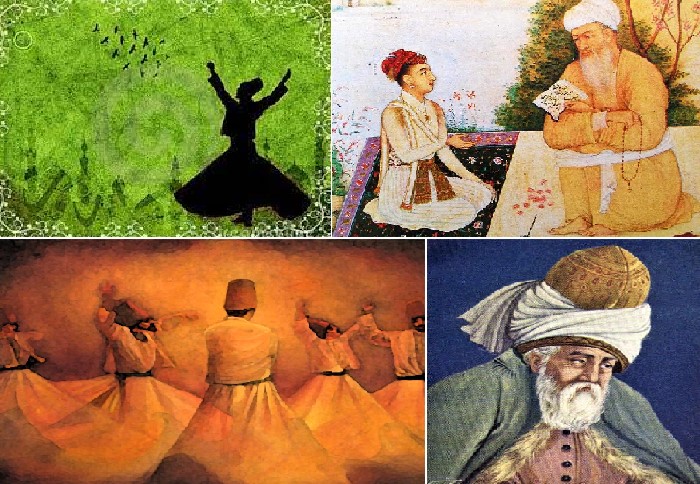
The word Sufi is rooted in the Arabic word Suffah which means terrace. Therefore, it references the devoted companions of the Prophet who dwelt on the terrace of the Prophet’s mosque in Madina.
Origin of Sufism
-
- The Sufi movement is characteristically Islamic.
- It originated and developed in the Arab peninsula and spread into the vast Muslim empire, which the rulers established after conquering many alien lands in Europe, Asia and Africa.
- Some famous central Asian Sufi saints were Ghazzali, Rumi and
Sufism in India
-
- Shaikh Ali Hujwari (1009-1072) of Data Gunj was the first reputed Sufi in India.
- Sufism in India got an impetus during the 10th and 12th centuries with Muslim invaders and became popular during the rule of the Delhi Sultanate.
Sufism and Islam
-
- Sufism derived inspiration from However, it was against the growing materialism of the Caliphate, the religious head of Islam.
- The Sufi saints seek inner purity, unlike orthodox Muslims who rely on behaviour on the outside and blind observance of religious rituals.
- They criticised the theologians’ adoption of dogmatic definitions and scholarly approaches to interpreting the Quran and Sunna (traditions of the Prophet).
- They sought an interpretation of the Quran based on their personal experience.
- Devotion is more critical than fast (Roza) or prayer (Namaz).
Teachings of Sufism
Sufis often rejected rituals and codes of behaviour.
-
- Sufism places emphasis on leading a simple life. Sufi saints preached in Urdu, Persian and Arabic etc.
- They emphasised following God’s commands and the Prophet Muhammad’s example, whom they regarded as a model human being, to find salvation through deep love and devotion to God.
- Sufis often propounded the idea of Wahadat-ul-wajud, i.e. unity of all existence.
- They didn’t believe in narrow societal classifications such as caste.
- Their prime focus was on social welfare. It led to the establishment of charitable institutes and the opening of orphanages and women’s service centres.
- They held assemblies in Khanqahs (Hospice) which included langar (open kitchen) and visits from all sections of society.
- Assimilation of Local Tradition: Practices that were adopted, including represented attempts to assimilate local traditions such as –
- offering water to visitors,
- yogic exercises,
- bowing before the Shaikh,
- shaving the heads.
- Assimilation of Local Tradition: Practices that were adopted, including represented attempts to assimilate local traditions such as –
-
- Discussions were held on spiritual matters; people sought the blessing of saints in solving worldly problems and attended music and dance sessions.
Method of Prayer in Sufism
-
- Like Yogi, Nathpanti, and Sufis also believed that the heart could be trained to look at the world differently.
- They developed the following elaborate training methods, which were performed under the guidance of a master (Pirs). It included:
- Zikr – Chanting of name/sacred formula
- Contemplation
- Sama – singing
- Raqa – dancing
- Discussion of parables (a short tale that illustrates a universal truth)
- Breath control
- Thus developed Silsilas(Orders), each following a slightly different tariqa or instruction which includes the following –
- Murshid – Teacher
- Murid – Student
- Tasawwuf – Mysticism
- Ziyarat – Pilgrimage
- Qawwali – Songs
- Barkat – Spiritual grace
- The tomb/dargah of Sufi saints became a place of pilgrimage. Many personalities visited these Dargahs. For example, Nizamuddin Dargah’s visitors included the court historian Ziyauddin Barani and poets such as Amir Khusrau and Amir Hasan Sijzi.
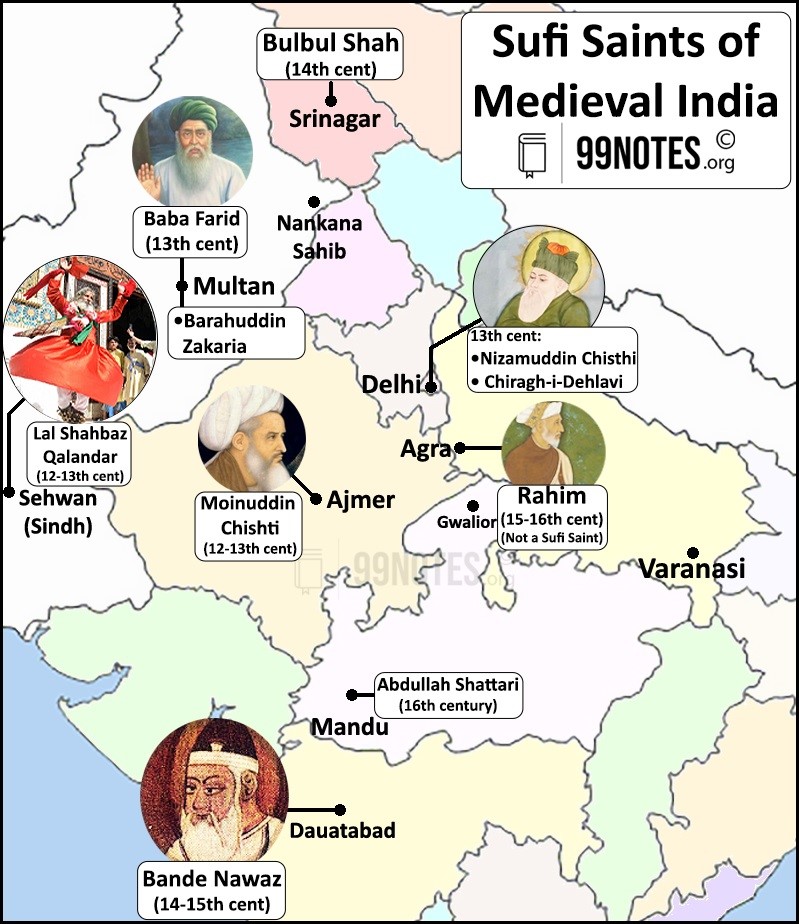
Important Sufi Orders/Silsilas
Broadly, there were two Sufi orders, Bashara (those who followed Islamic(Sharia) laws) such as Chishti, Firdawsi, Naqshbandi, Suhrawardi and Qadiri silsilas, and Beshara (not bound by Islamic laws) such as Qalandars.
The Chisti order
- Abu Ishaq Shami founded it in Chisht, a small town near Herat, Afghanistan, about 930 AD.
- It was founded in India by Khwaja Muinuddin Chishti during the 12th
- The Chisti order belonged to the Sunni sect of Islam. They rose to their peak during the Delhi Sultanate.
| Teacher | History |
Khwaja Muinuddin Chishti (1143-1236)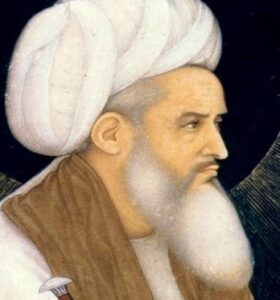 |
· Khwaja Muinuddin Chishti established the Chisti order in India.
· He arrived in Ajmer around 1190 during the reign of Prithviraj Chauhan from Afghanistan for the first time. · He settled in India during the time of Iltutmish in the early 12th century. · He appointed Bakhtiar Kaki as his spiritual successor. |
| Qutbuddin Bakhtiyar Kaki (1173-1235) | · He came to Delhi during the reign of Iltutmish. |
Baba Farid (Fariduddin Ganjshakar) (1188-1266) |
· Settled in Pakpattan, in Punjab, Pakistan.
· Baba Farid’s poems were included in Adi Granth Sahib by the Sikh Guru Arjan Dev. Therefore, Baba Farid is honoured as one of the 15 Bhagats(a holy person) by the Sikhs. |
Khwaja Nizamuddin Auliya (1238-1325)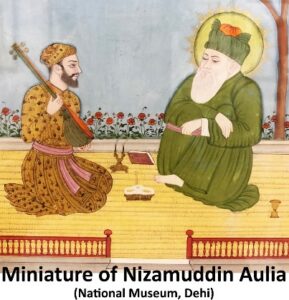 |
· Young Nizamuddin became Baba Farid’s disciple at the age of 20.
· His few of many famous students include Chirag-e-Dehli and Amir Khusrau. · He lived during the Tughlaqs. Muhammad bin Tughlaq built his tomb in Delhi. |
| Nasiruddin Chiragh Dehlavi (1274-1334) | · He was called Roshan Chirag-e-Delhi by his followers.
· Firoz Shah Tughluq made his tomb. |
| Muhammad bin Yousuf al-Hussaini (Bande Nawaz) (1321-1422s) | I. Due to the attack of Timur, he moved to Daulatabad, taking the Chisti’s order to South India.
II. He is also known as Bande Nawaz Gaisu Daraz. |
Other Historically Important Sufi Orders:
- Surawardi Order
- It was founded by Shaikh shihabuddin suhrawardi.
- This order became popular in the North Western part of India.
- The credit for organising it goes to its first popular Saint Shaikh Bahauddin Zakariya, who settled down at Multan.
- Saints of this order had big jagirs and had close contact with states.
- Qadri Order
- It was founded by Abdul Qadir Gilani (1077–1166).
- Dara Shikoh and Jahaara, son and daughter of Shah Jahan, respectively, were followers of this order.
- Naqshbandi Order
- It was founded by Baha-ud-Din Naqshband Bukhari (1318-1389) in the city of Bukhara (Uzbekistan). Baqi Billah Berang brought this order to India during the 16th
- It was the sunni order of sufism with an orthodox bent. It was against the Traditional sufi practices like sama, pilgrimage to the tombs of saints etc.
- His successor Ahmad Sirhindi (1564-1624), even opposed Akbar’s Din-i Ilahi and supported the execution of Sikh Guru Guru Arjan by Jahangir.
- Sirhindi was also opposed to the pantheistic philosophy of Wahadat-ul-wujud(unity of all existence) and propounded the theory of wahadat -ul-shudud(God is different from its creation).
- Shattaria Order
- Abdullah Shattar (15th century), who was a sufi master from Transoxiana, established the Shattaria order of Sufism in India.
- He toured different places across India before finally settling down in Mandu.
Sikhism
Guru Nanak Dev was the founder of Sikhism. His disciples were known as Sikhs. ‘Sikh’ means disciple in Punjabi.
Sikhism was born when there was a growing conflict between Hinduism and Islam in India. Guru Nanak is generally portrayed as a reconciler of the two conflicting traditions.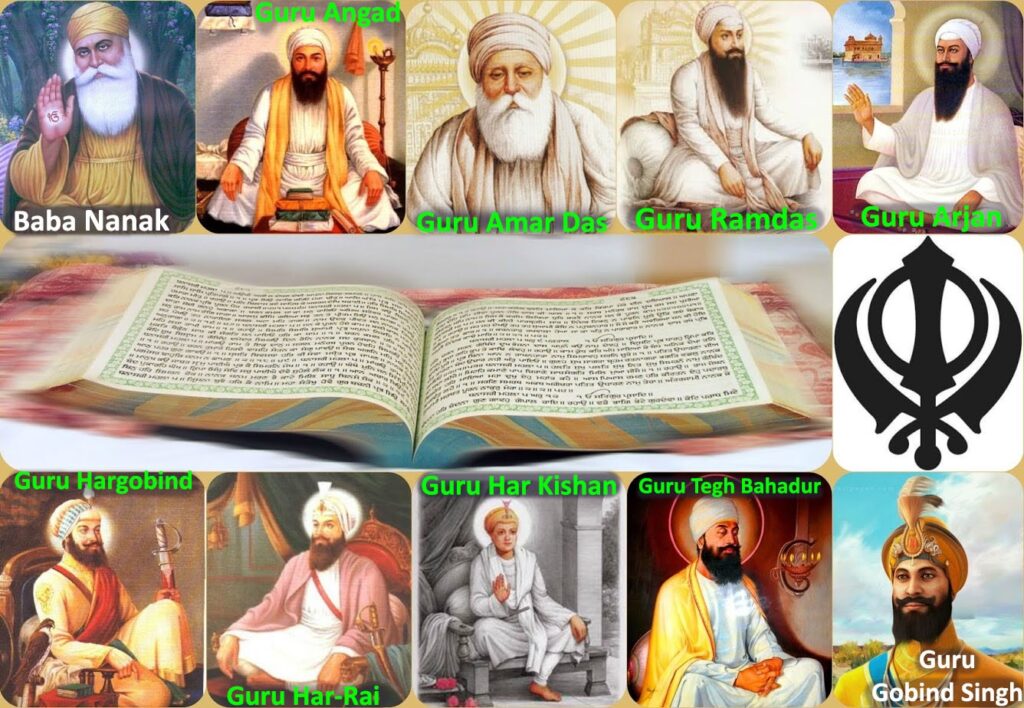
The Ten Sikh Gurus
-
Baba Guru Nanak (1460-1539)
-
- Born in Talwandi (Nanaksahib, Pakistan), he travelled widely and established a centre at Kartarpur (Dera Baba Nanak, River Ravi).
- His followers were from all social backgrounds. They ate together and had common kitchens called Langars.
- The sacred place Guru Nanak created was Dharamsal, now known as Gurdwara.
- His hymns and teachings outlined his messages. These implied that he advocated a form of Nirguna He expressed his ideas through hymns called “Shabad”.
Baba Guru Nanak Views on Religious Practices –
-
-
- He firmly rejected the external practices of the religions he observed around him.
- He rejected austerities, ritual baths, image worship, sacrifices, and Hindu and Muslim scriptures.
- Baba Guru Nanak did not desire to establish a new religion. Still, his followers consolidated their practices after his death and distinguished themselves from Hindus and Muslims.
-
What were the major teachings of Baba Guru Nanak:
Major teachings of Baba Guru Nanak Dev ji are:
-
-
- Nam-dan-Isnan: Nam (right worship), dan (welfare of others) and Isnan (purity of conduct) are the essences of his teaching.
- These can be achieved through:
- Nam Japna (Constantly chanting God’s name),
- Kirtan Karna (Earning an honest livelihood) and
- Vand chakkna (Sharing your earnings with others if needed).
- He insisted that followers must be householders, adopt productive and valuable occupations, and contribute general funds to the community of followers.
-
The Concept of God –
-
-
-
- The Absolute or “rab” lacked any gender or form for him.
- He advocated a simple connection to the Divine by remembering and reciting the Divine Name (Ik Omkar).
- He sang these compositions while his attendant Mardana played the rabab (a lute-like musical instrument).
- He set up rules for the Sangat (congregational worship) involving collective recitation.
-
-
-
Guru Angad (1504-1552)
-
- Baba Guru Nanak, before his death, appointed a successor Lehna and was renamed, Guru Angad.
- He formalised a new script Gurumukhi. He completed compositions of Guru Nanak and added a few of his own.
- Three successors of Angad also wrote under the name of “Nanak“.
-
Guru Amar Das (1479-1574)
-
- He emphasised both spiritual pursuits as well as daily ethical life.
- He recommended that his followers have a holy devotion to Guru’s image.
- He was also a reformer, opposing sati (a Hindu custom) and the Muslim practice of covering women’s faces.
- Anand Karaj is the Sikh marriage ceremony that he also established.
-
Guru Ram Das (1534-1581)
-
- He composed about ten per cent of the hymns in the Guru Granth Sahib.
- He founded the city of
- He introduced the Masand institution. The masand were leaders of the Sikh community who lived far from the Guru. Still, they acted to lead the faraway congregations, their mutual interactions and raised revenue for Sikh activities and the Gurudwara building.
- He started the construction of Harmandar Sahib.
-
Guru Arjan (1563-1606)
-
- He was the first of the two Sikh Gurus to be martyred.
- He died in the custody of Mughal Emperor
- He compiled Baba Guru Nanak’s hymns and those of his four successors.
- In addition, he added the hymns of other religious poets of different languages like Baba Farid, Ravidas (or Raidas), Kabir, Ramanand, Surdas, and Namdev in the Adi Granth Sahib. These people are revered as Bhagats, or Holy men in Sikhism. There are 15 such Bhagats.
- These hymns are called “Gurbani“.
-
Guru Hargobind (1595-1644):
The Sikh movement began to get politicised in the 17th cent.
-
Guru Har Rai (1630-1661)
-
Guru Har Krishan (1656-1664)
-
Guru Tegh Bahadur (1664-1675):
Aurangzeb executed Guru Tegh Bahadur (1664-1675) in 1675.
10. Guru Gobind Singh (1666-1708)
-
- He included the compositions of the ninth guru, Guru Tegh Bahadur, and this scripture was called the Guru Granth Sahib.
- On 13th April 1699, on the day of Baisakhi, he laid the foundation of the Khalsa Panth (meaning: an army of the pure) in 1699 and defined its five symbols.
- The Five symbols of Sikhism are
1. Kesh or uncut hair,
2. Kirpan or a dagger,
3. Kachha or a pair of shorts,
4. Kangha or a comb and
5. Kara or a steel bangle.
-
- Under him, the community got consolidated as a socio-religious and military force.
- By this time, Amritsar had developed into self-governing around the central Gurudwara called Harmandar Sahib (Golden Temple).
Impact of Bhakti movement:
- Revolutionising religion: The movement saw a change in both the way people worshipped and how they believed in God. In the future, emphasis was placed on devotion to and love for God.
- Fight against social evils: The Bhakti preachers raised their powerful voices against immoral acts like infanticide, sati, adultery, sodomy and intoxicants like wine, tobacco and toddy. They aimed to set up an excellent social order upholding high moral values.
- Instilling non-violence and Peace brought harmony among the Muslim and Hindu communities. The movement tried to reduce the growing animosity between the two and fill the gap.
- The spirit of mutual respect, harmony and tolerance that the Bhakti saints inaugurated had another long-lasting impact, i.e. the emergence of a new cult of Satyapir started under King Husain Shah of Jaunpur. Likewise, the spirit of liberalism adopted by Akbar was inspired by it.
- Development of language and culture: The movement expanded vernacular language and literature across the country. For example – Nanak, Chaitanya and Kabir preached in their respective vernacular tongues – Nanak in Gurmukhi, Chaitanya in Bengali and Kabir in Hindi.
Conclusion: With such enduring effects, medieval society’s religious depression was abandoned. The Bhakti movement in North India teachings served as a refreshing balm for the oppressed classes. As a result, the profound transformation laid the groundwork for an Indian society that is liberal and diverse.
FAQs Related to Bhakti Movement in North Indian
What is Bhakti Movement in North India?
The Bhakti Movement in North India was a medieval Indian reform movements, focused on devotion to the God, transcending caste barriers, and promoting a direct spiritual connection.
In Which Century Bhakti Movement in North India Began?
The Bhakti Movement preliminary began in India during 7th to 8th Century.
Who Started Bhakti Movement in North India?
Bhakti Movement in North India was not started by a single Individual Saint but it evolves over the time with the contributions of various Bhakti Saints like Ramanuja, Basava and Kabir.

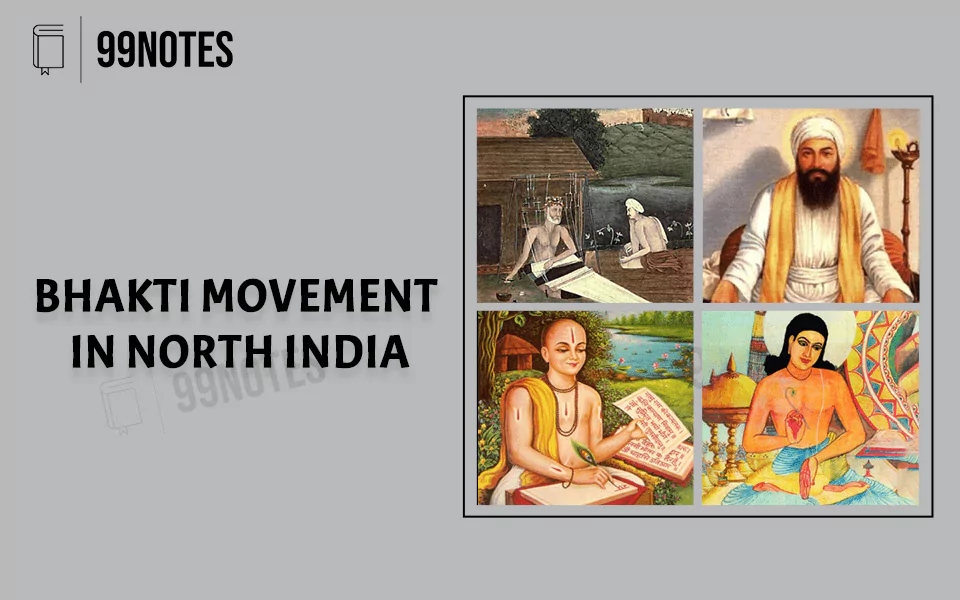



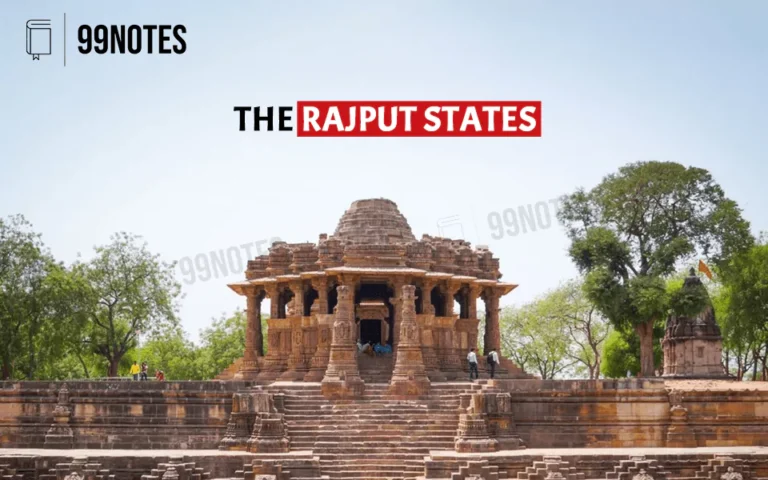
![Maratha Empire: History, Rulers, War &Amp; Administration [Upsc Notes] | Updated July 27, 2024 Maratha Empire: History, Rulers, War & Administration [Upsc Notes]](https://99notes.in/wp-content/uploads/2023/04/maratha-empire-featured-768x500.webp)
